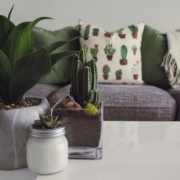Common Issues That May Cause Your Sump Pump to Fail at Its Job!
Common Issues That May Cause Your Sump Pump to Fail at Its Job!
Many of my customers ask me about the use of Sump Pumps in their home. If you have a sump pump or perhaps you are looking into getting a sump pump in your home, here is a bit of information about what they are and some of the possible issues you may encounter with a sump pump that is not running as expected.
Sump pumps are designed to handle surface water and ground water (storm water) that accumulates around the building.
Some houses need sump pumps because the slope of the land directs water toward the foundations. In other areas, sump pumps are necessary because of a high water table.
A sump pump system consists of a sump (tank) below floor level. It has one or more side inlets. The sump may be tile, steel, concrete or plastic, for example. Sumps should be at least 18 inches in diameter and 24 inches deep, ideally with a solid floor. Pumps have both the motor and pump at the bottom of the sump. In either case, there will be 120-volt electrical power and a float switch to activate the pump as the water level rises. Sumps should have a cover to prevent people, pets and objects from falling in and to help keep radon gas, for example, out of the home.
Common Issues That May Cause Your Sump Pump top Malfunction
Plumbing and Piping
Codes now require a check valve on the discharge side, although we see many installations with no check valve. The purpose of the check valve is to prevent water in the discharge pipe from flowing with gravity back into the sump when the pump shuts off.
The discharge piping line is often polyethylene, PVC or ABS piping, although it can be any approved drainage piping material. Flexible hose is not a good material.
Sump pump pipes discharge incorrect, should be into a ditch, onto the ground, well away from the home, into a French drain (gravel pit below grade), or out through a hillside (to daylight) if the ground slopes down away from the house.
Water should be discharged far enough away from the building that it won’t find its way back.
The discharge line is obstructed or disconnected. The pump may be operating properly, but the water may not be carried away
Electrical
Sump pumps typically have 120-volt cords plugged into a conventional receptacle. The receptacle is typically a dedicated circuit. All sump pumps should be electrically grounded and a Ground Fault Circuit Interrupter (GFCI) −protected circuit .
Covers
A missing or weak cover is a safety hazard. Children may fall into the sump. Objects may fall into the sump, obstructing the intake or fouling the float switch mechanism
A defective float switch system
When water rises enough to lift the float, the float switch closes and starts the pump motor. The pump runs until the float drops enough to open the switch and turn off the motor.
Sump problems
Debris in the sump or clogged sump. Sump pits are often collection points for debris. If silt or other foreign material gets into the pump, the pump may be destroyed.
Sump damage
If the sump pit is damaged, dirt may get into the sump. This will clog and possibly ruin the pump. Sump walls may be broken, rusted or collapsed.
Pump problems
There is a risk of flooding if the sump pump is not operable. The sump may not work for several reasons:
A defective float switch system, a lack of electrical power, a seized pump or a burned-out motor.
Sump pumps are inexpensive devices with a critical role. They are an important part of a home inspection. The inspection report should explain the importance of the pump to clients. We recommend quarterly inspection and testing of sump pumps.
—
If you’d like more information – or to contact a professional about a consultation for your home water issues, we recommend Montana Basement Solutions



